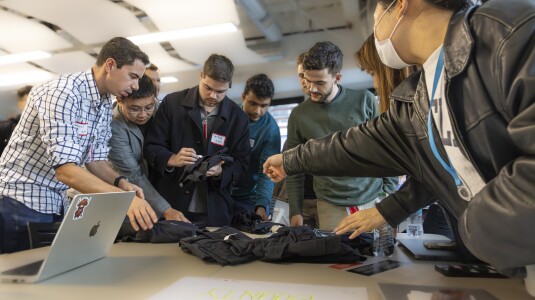[Editor's note: INFORMS, the world's largest operations research and analytics conference, is occurring this week, so we're sharing this interview and presentation on working toward net zero carbon in Amazon’s fulfillment network.]
In June 2022, Amazon re:MARS, the company’s in-person event that explores advancements and practical applications within machine learning, automation, robotics, and space (MARS), took place in Las Vegas. The event brought together thought leaders and technical experts building the future of artificial intelligence and machine learning, and included keynote talks, innovation spotlights, and a series of breakout-session talks.
Now, in our re:MARS revisited series, Amazon Science is taking a look back at some of the keynotes, and breakout session talks from the conference. We've asked presenters three questions about their talks, and provide the full video of their presentation.
On June 23, Loan T. Le, technology transformation manager, presented the talk, "Net zero carbon goal and Amazon’s fulfillment network". The session focused on an overview of the opportunities for reducing energy consumption in robotics and automation across Amazon's fulfillment center network.
What was the central theme of your presentation?
At Amazon, we've pledged to reach Net Zero Carbon by 2040. This will require innovative solutions with contributions across many sectors of Amazon. For example, the technology solutions currently powering Amazon's material handling equipment has reached it theoretical limit in efficiency. This talk focuses on opportunities for reducing energy consumption in robotics and automation applications using advanced technologies such as mechatronic drives and artificial intelligence. Our studies show that at least 40% energy savings can be realized by employing novel drive technologies.
In what applications do you expect this work to have the biggest impact?
Automation and fulfillment center operations: Automation in the Amazon context consists of traditional material handling equipment, structured fields for drive units, robotic arms, matrix sortation architectures, and autonomous vehicles.
What are the key points you hope audiences take away from your talk?
Large levers exist to reduce and optimize electrical power consumption within the automation and robotics space. Key design considerations include: proper sizing of power distribution infrastructure, integrating novel technologies that minimize energy consumption, and development of conveyance network architectures with power efficiency as a key performance indicator.





